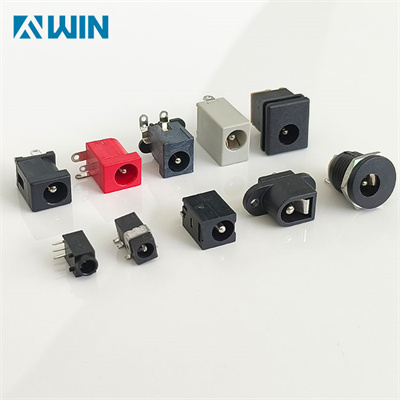DC power jacks with wires silently underpin the electronics ecosystem, functioning as indispensable conduits for direct current transmission. Serving as a critical interface, these components enable seamless power transfer from DC power supplies to diverse electronic devices that rely on a stable low-voltage current. This encompasses routers, printers, and small household appliances, all of which depend on these power jacks for proper operation.

The design of DC power jacks with wires is deceptively straightforward yet highly efficient. The jack, the power input point, is engineered for secure power plug acceptance. Constructed from durable materials like metal or high-quality plastic, it withstands repeated insertions and removals without degradation. Meanwhile, the insulated wires safely convey current from the power source to the device. Their meticulous design minimizes electrical resistance, reducing power loss and optimizing energy transfer efficiency. The insulation not only prevents electrical shorts but also provides mechanical strength, protecting the wires from physical damage.
Recent innovations have seen manufacturers integrating strain relief mechanisms into wire-jack connections. These features, typically in the form of rubber boots or molded plastic sleeves, prevent wires from detaching at the jack entry point. This significantly extends the connection lifespan, particularly in frequently moved devices or those with tugged power cables. Additionally, the use of stranded wire conductors, as opposed to solid wires, offers greater flexibility and resilience against metal fatigue caused by repeated bending.
Chassis DC power jacks represent a specialized type, offering enhanced durability and reliability. Engineered for direct mounting on electronic device chassis, such as desktop computers or industrial control panels, this installation method provides multiple benefits. Firstly, it offers a more stable and secure connection compared to external power connectors, reducing the risk of accidental disconnection. The rugged construction of chassis DC power jacks allows them to endure harsh operating conditions, including vibrations, shocks, and extreme temperatures. Equipped with robust fastening mechanisms like screws or clips, they remain firmly in place, ensuring consistent power contact even in high-use, reliability-critical environments.
Certain industrial-grade chassis jacks feature IP (Ingress Protection) ratings, making them resistant to dust, moisture, and in some cases, submersion. This is crucial for applications in manufacturing plants, outdoor kiosks, or marine electronics, where exposure to the elements can quickly degrade standard power connectors. The use of corrosion-resistant materials like stainless steel or nickel-plated brass in their construction further enhances their suitability for harsh environments.
DC power socket connectors are equally vital in the power delivery system. Designed to pair seamlessly with DC power jacks, they complete the power pathway from source to device. These socket connectors come in various standardized sizes and configurations, with the 5.5x2.1mm and 3.5x1.35mm variants being among the most prevalent. This standardization ensures cross-device compatibility, simplifying electronics design and production for manufacturers. The plug-and-play functionality of DC power socket connectors streamlines device maintenance and repair, allowing for quick component replacement without specialized tools or technical expertise. Simultaneously, these connectors are engineered to maintain strict voltage and current compatibility, safeguarding devices from damage caused by power surges or mismatches.
Emerging socket connector designs incorporate smart features, such as built-in sensors that monitor temperature and current flow during power transfer. These sensors can detect anomalies like overheating or excessive current draw and activate protective mechanisms, such as automatically cutting off the power supply. This safeguards both the connected device and the power source. Additionally, some high-end connectors utilize gold-plated contacts to reduce electrical resistance and enhance conductivity, ensuring a more stable long-term power connection.
In the complex landscape of modern electronics, the synergy between DC power jacks with wires, chassis-mounted variants, and matching socket connectors is indispensable. Their combined functionality ensures a continuous and stable power supply, essential for the reliable operation of countless electronic devices. From the moment a device is plugged in, these components work in harmony to deliver the precise power required, enabling seamless performance and extending equipment lifespan. Despite their often overlooked significance, these seemingly mundane yet highly sophisticated components underscore the importance of every small element within the intricate machinery of modern technology.
Contact: Ms Bella
Phone: +86-15999819066
Tel: +86-0769-89615395
Email: Bella@fvwin.com
Add: No 25, Xinfeng East Road, Shijie Town, Dongguan, GD, CN, 523000
We chat
